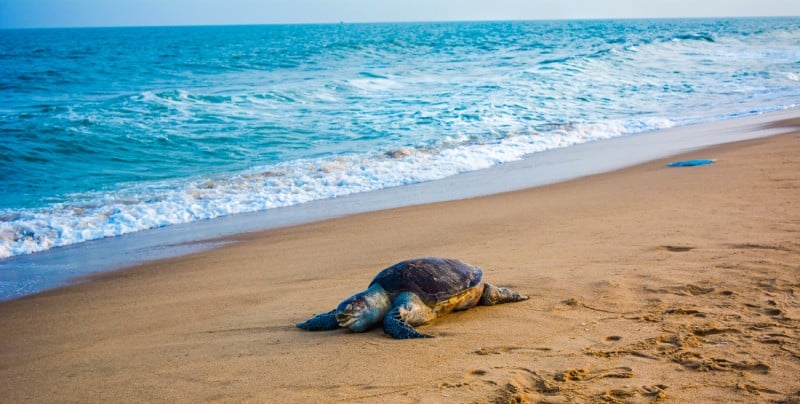
Olive Ridley Sea Turtle Facts
- The term Olive Ridley Sea Turtle serves as the common name for the rather amazing Lepidochelys olivacea. Although somewhat lengthy, the common name nevertheless remains descriptive.
- In addition, this fascinating sea creature forms the smallest of all known types of sea turtle. However, and rather thankfully, it also represents the most highly abundant of them all.
- Along with one of its relatives, this reptile also remains best known for one specific habit. This occurs due to its amazing trait of engaging in nesting in mass numbers on the same beach.
- Despite its great numbers, the IUCN currently lists this animal as Vulnerable. This listing occurs due to the growing concerns over several factors. These include climate change, given the fragile nature of its nesting locations.
Related Articles
Olive Ridley Sea Turtle Physical Description
The comparatively small Olive Ridley Sea Turtle attains an average length of about 2 ft (61 cm). The species also displays a slight degree of sexual dimorphism. However, it does not appear in the usual manner.
Firstly, the overall weight and length of both genders remain roughly equal, in most cases. But, the female of the species typically develops a slightly more rounded carapace than that of the male.
Further, mature individuals average about 101 lb (46 kg) in weight. Even exceptional individuals rarely exceed a weight of 110 lb (50 kg). Yet the tiny hatchlings average a mere 0.05 lb (20 grams).
Finally, in color, adults of this rather remarkable species most commonly display a combination of various shades of olive green.
- Kingdom: Animalia
- Phylum: Chordata
- Class: Reptilia
- Order: Testudines
- Family: Chelodiinae
- Genus: Lepidochelys
- Species: L. olivacea
Olive Ridley Sea Turtle Distribution, Habitat, and Ecology
The tiny yet impressive Olive Ridley Sea Turtle possesses a rather wide area of distribution. It inhabits the temperate and tropical waters of both the Pacific and Indian Oceans. It appears to be especially common near Australia.
While it also inhabits areas of open ocean, the majority of individuals prefer to inhabit comparatively shallow regions within 9.3 mi (15 km) of land. Specific habitats, however, change during its life cycle.
Although the animal will occasionally feed on algae when other food remains scarce, the species evolved as predominantly carnivorous.
Its typical prey consists of various invertebrates, such as sea urchins, shrimp. crabs, and jellyfish. Surprisingly, cannibalistic behavior sometimes occurs when other food becomes scarce.
Other than some sharks and orcas, adults have relatively few natural predators.
Species Sharing Its Range
Check out our other articles on Australian Ghost Shark, Hagfish, Bobbit Worm, 9 of the Weirdest Animals on Earth, Boojum Tree, Luna Moth, Victoria Falls, Snowshoe Hare, Gila Monster
